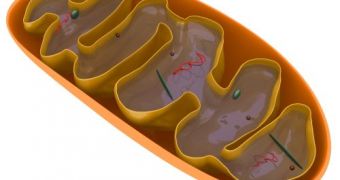A new research at St George's, University of London has shed some light on a new cause of the rare mitochondrial disease called spastic ataxia – a gene mutation mechanism.
They believe that the same gene mutation could also trigger other neurological disorders that lead to growth, coordination, speech, visual and muscle problems.
Mitochondria is responsible for transforming food and oxygen into energy, and although disorders resulting from mitochondrial abnormalities are well known, this time, science discovered a new mutation mechanism.
The scientists have named this mutation the “maturation defect of mitochondrial ribonucleic acid (RNA)'.
They found that the mitochondrial RNA of affected cells had chains of nucleotides that were shorter than normal, and it these incomplete chains trigger the debilitating symptoms of spastic ataxia.
One out of every 11,000 adults is affected by a mitochondrial disease, and one in 6,000 are at risk of developing it.
The difficulty is to identify them, because even diseases belonging to the same subtype can have completely different symptoms.
“Our findings define a new subclass of mitochondrial dysfunction and disease mechanism,” said Andrew Crosby, professor of medical genetics at St George's, University of London, and the leader of the study.
“This is an important discovery as there are other neurodegenerative disorders that may be caused by the same mechanism.
"This sheds light on an area of genetic disease that we still don't know very much about, and could help diagnose other disorders.
“But a lot more work is needed before any new treatments could be developed.”
The findings of the study have been published in The American Journal of Human Genetics.
Prof Crosby and his team at St George's are part of a long-term project that is investigating genetic disorders among the Amish communities in the USA.
The latest study was based on the genetic analysis of an extended Amish family in which several children were affected by spastic ataxia.

 14 DAY TRIAL //
14 DAY TRIAL //